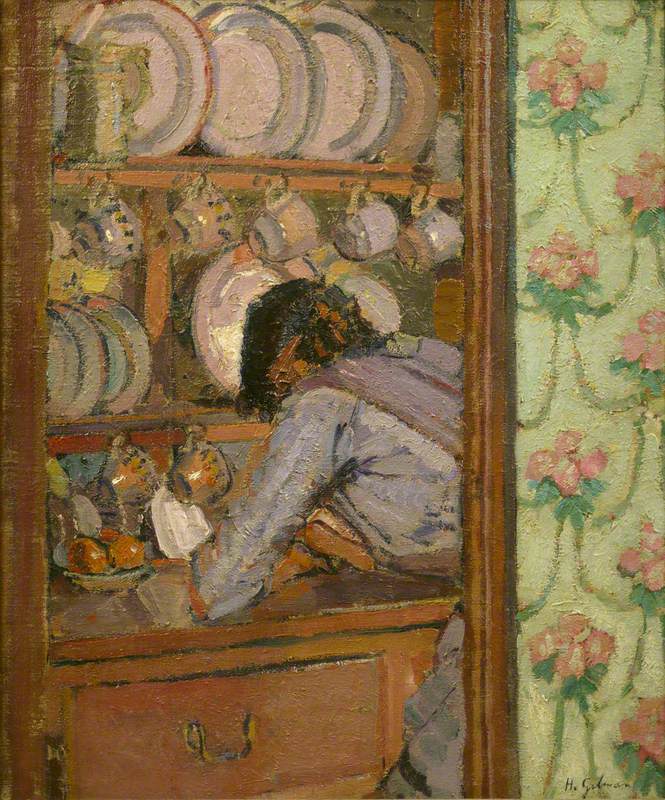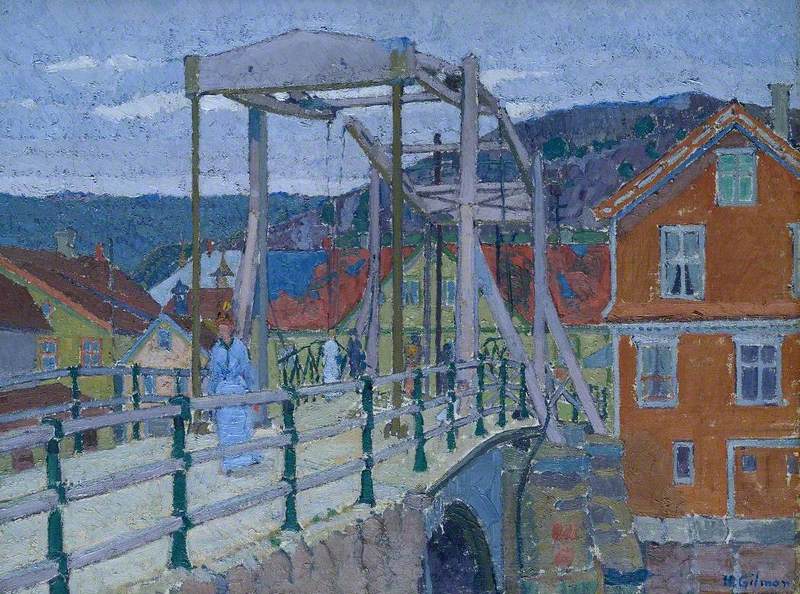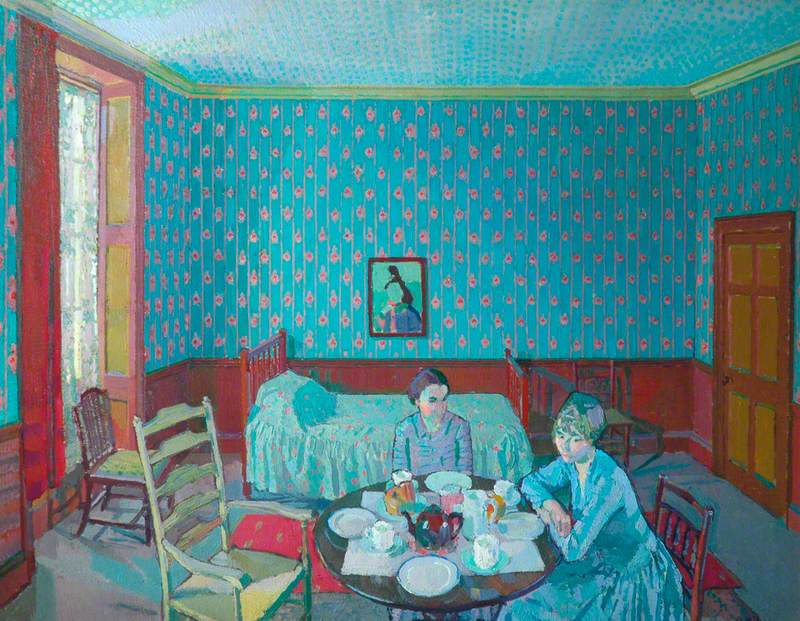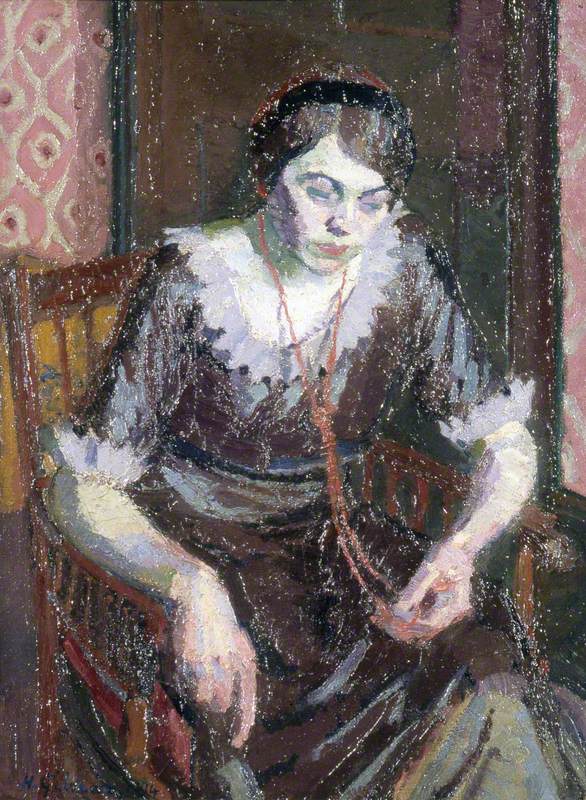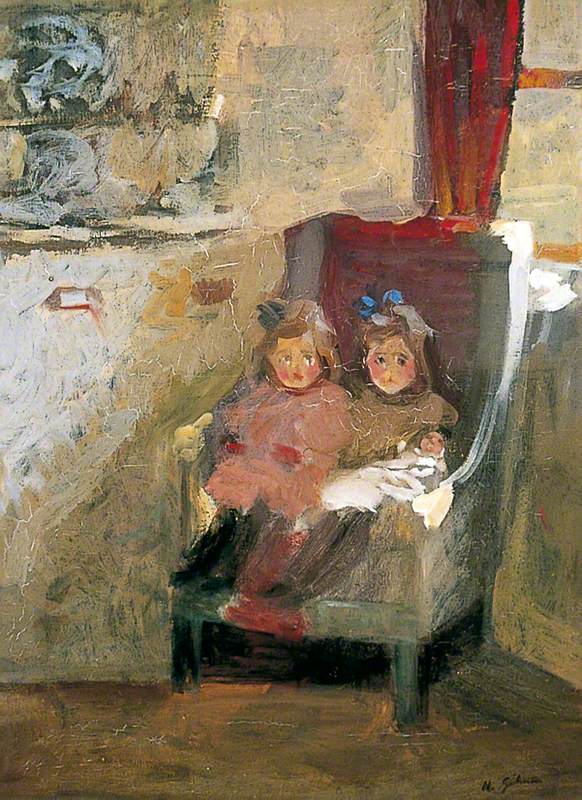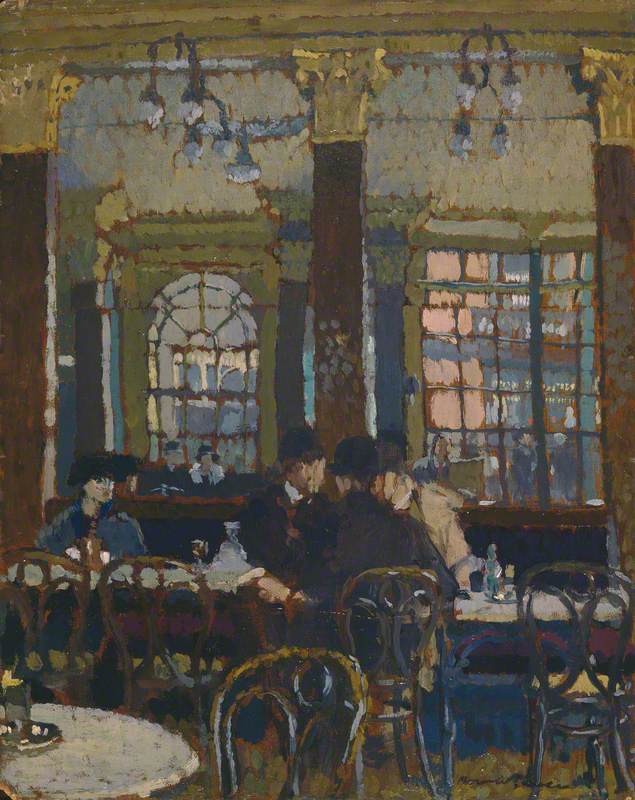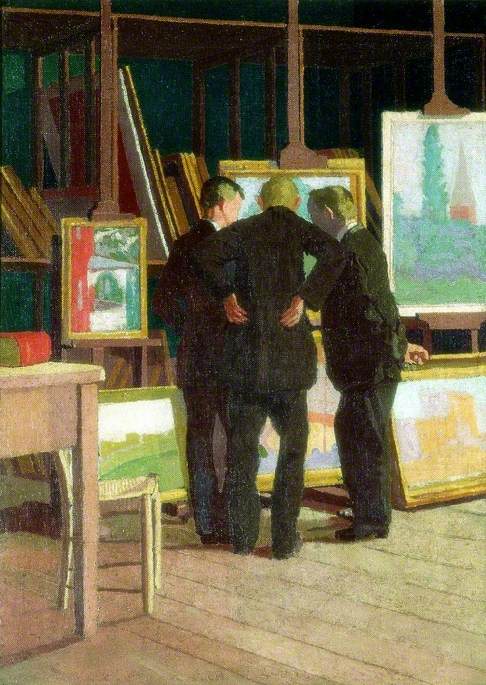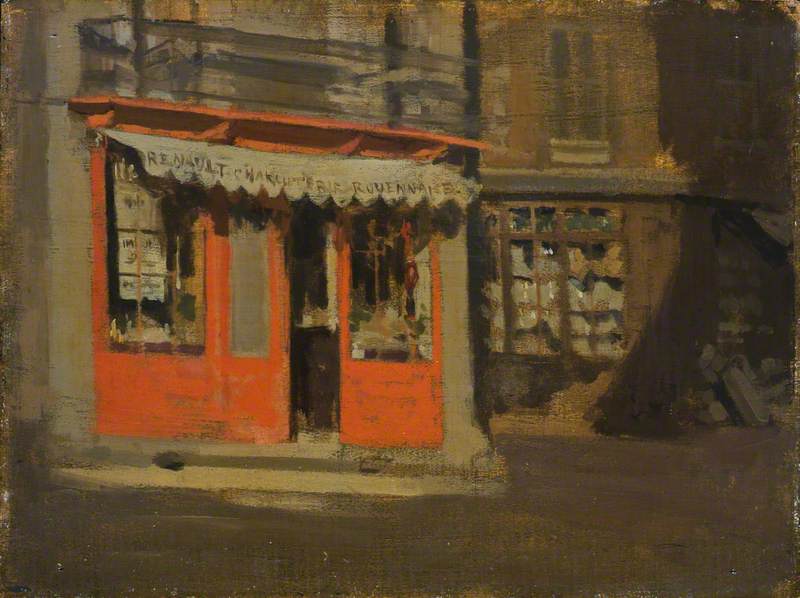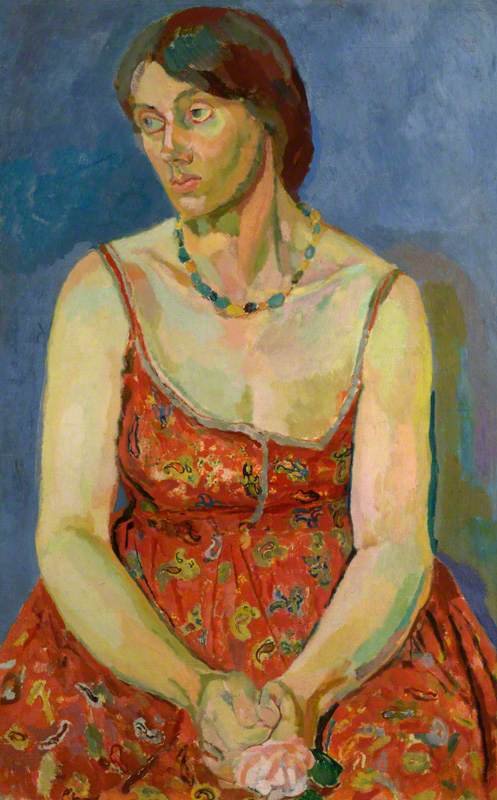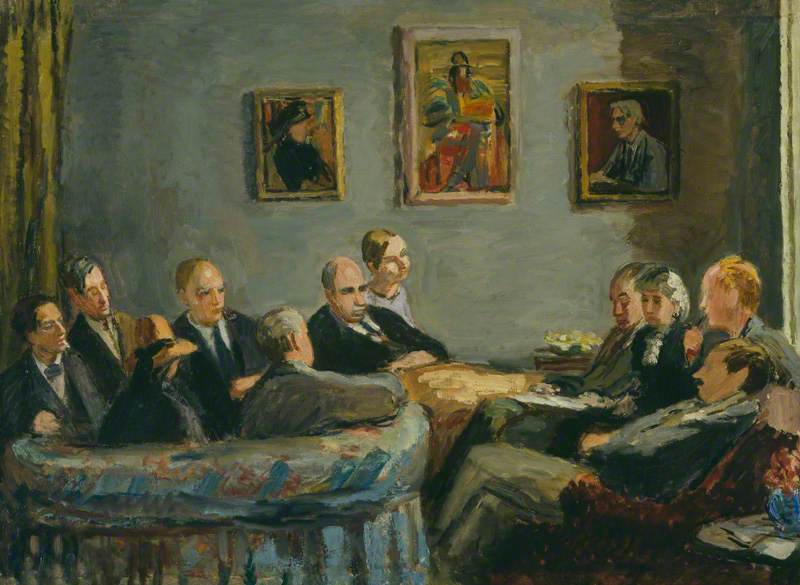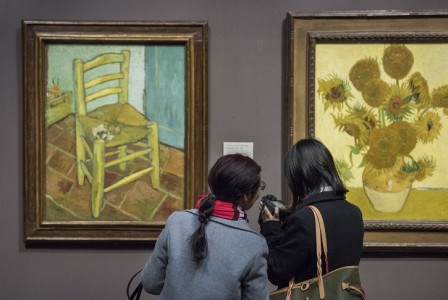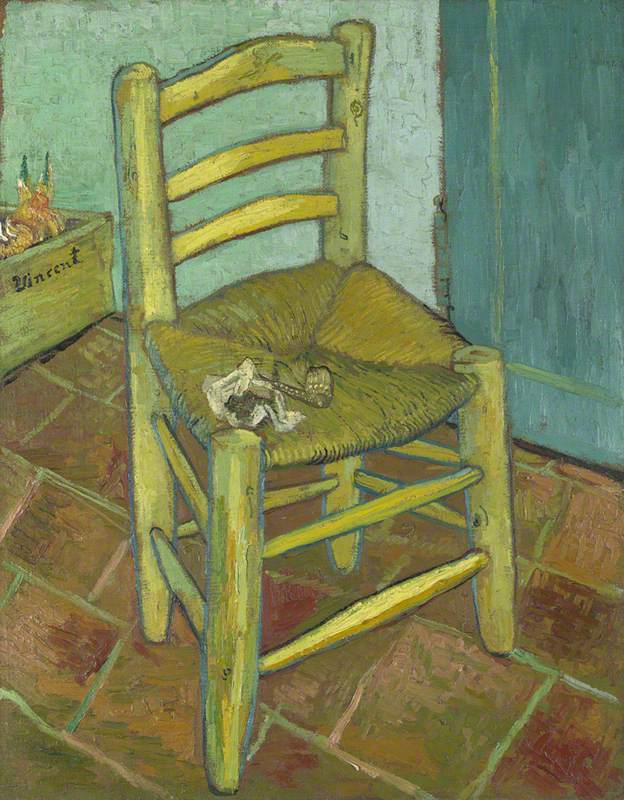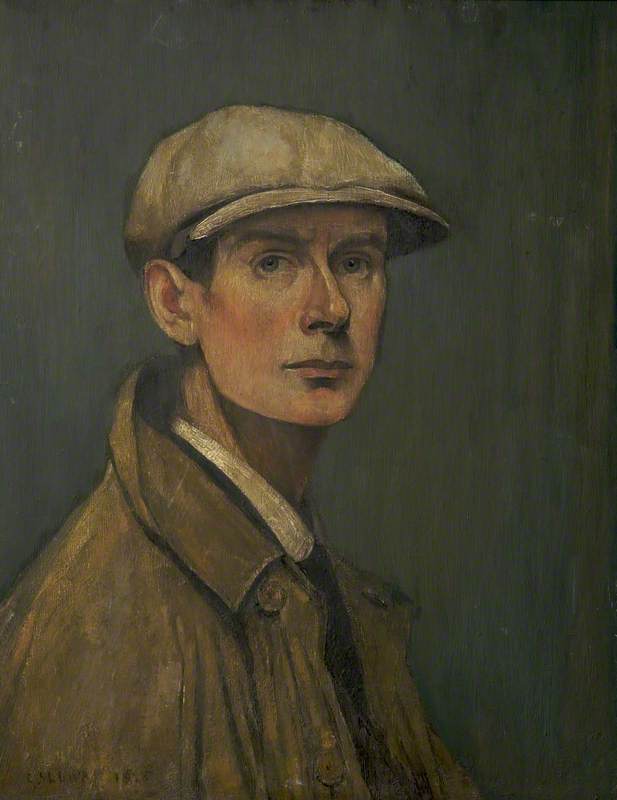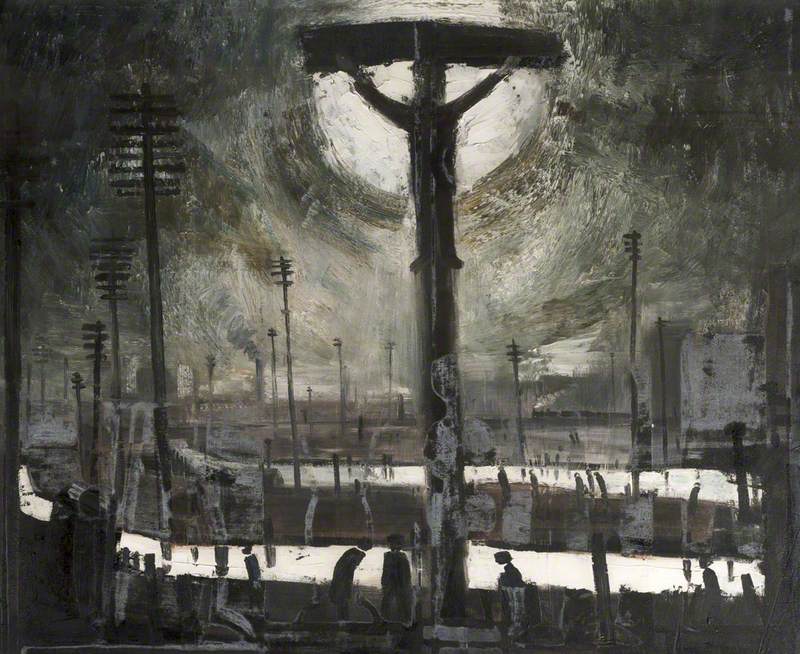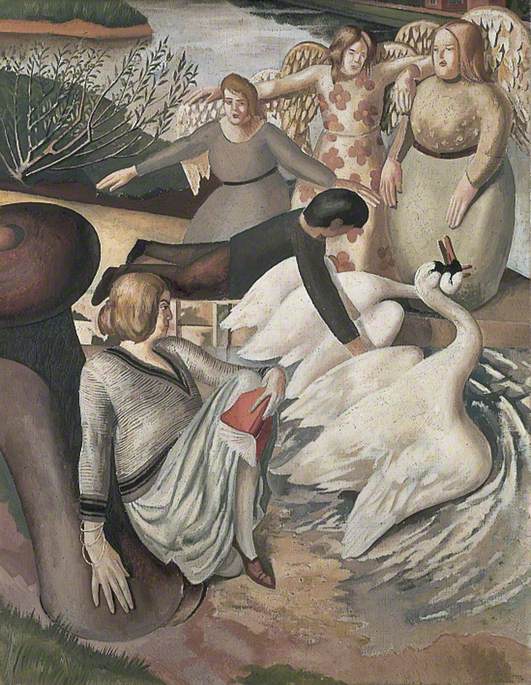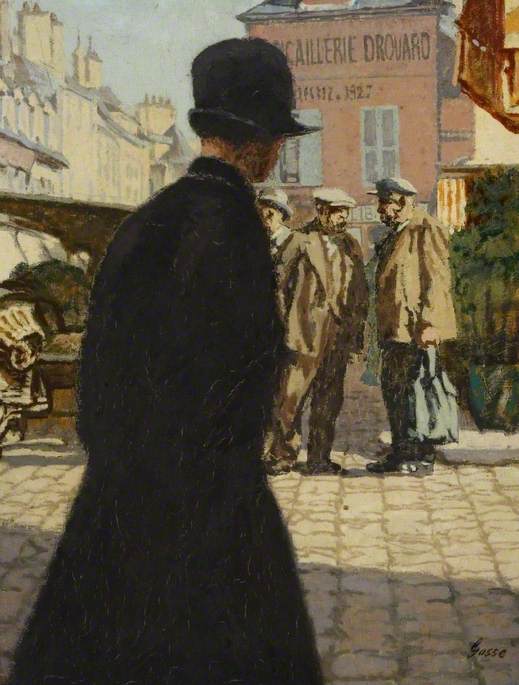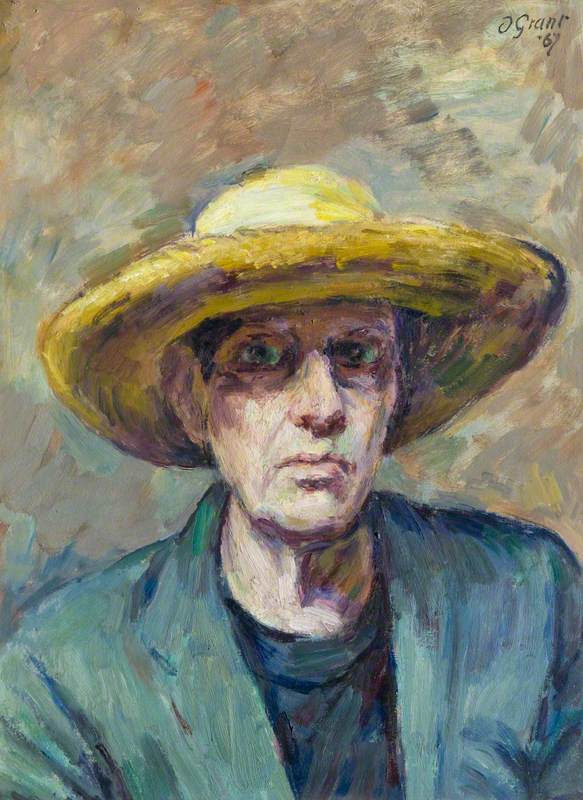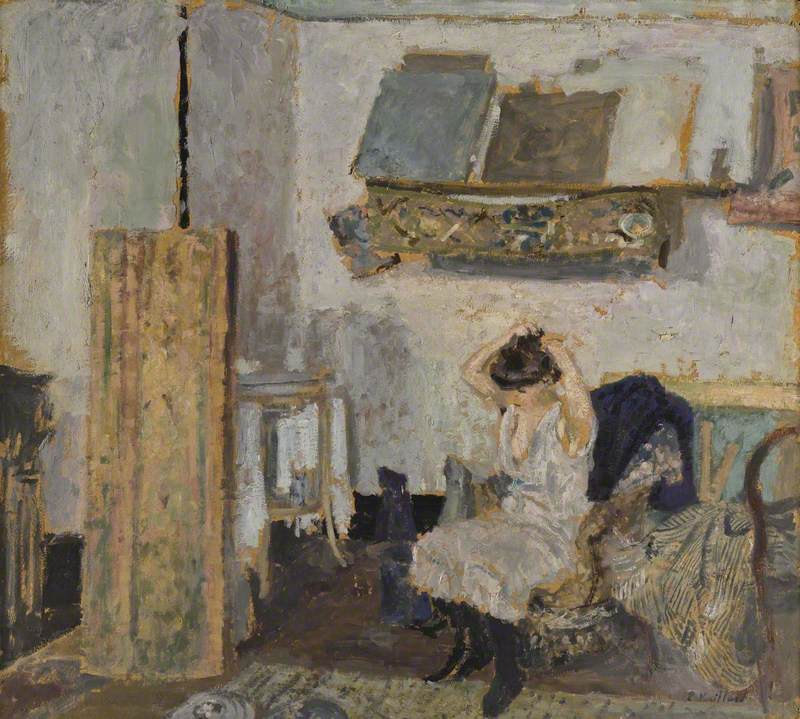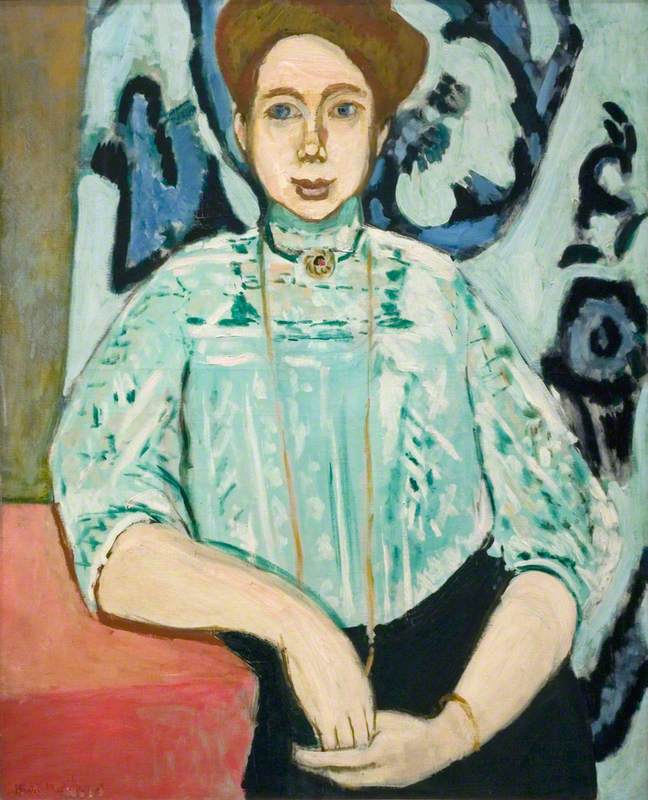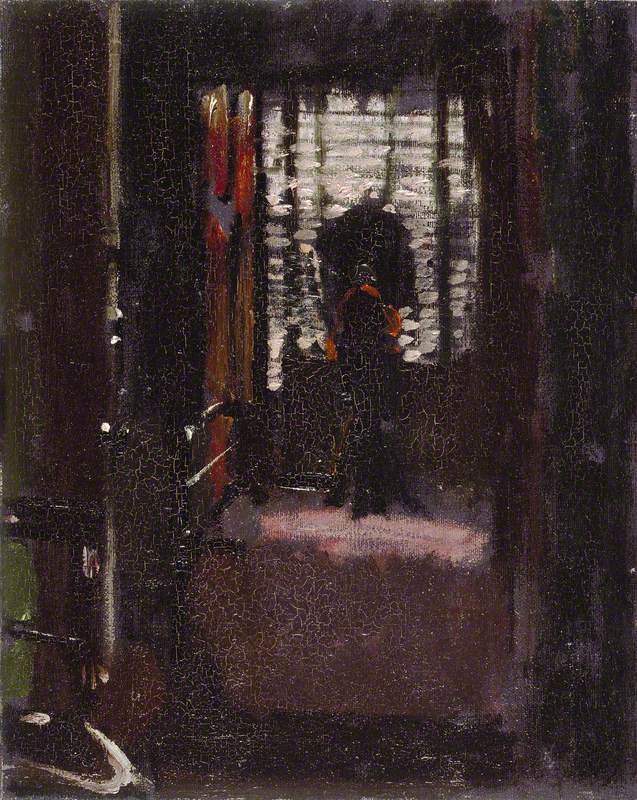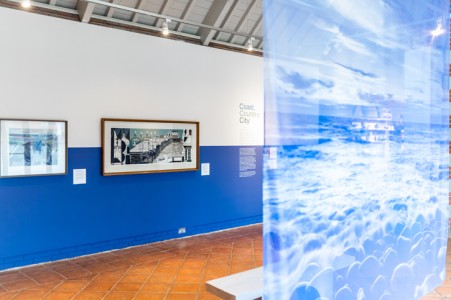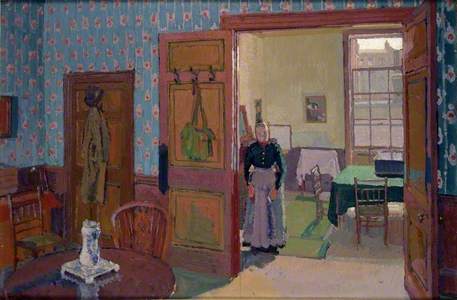The exhibition 'Harold Gilman: Beyond Camden Town', now showing at Pallant House Gallery in Chichester, is the first significant exhibition of the work of British painter Harold Gilman (1876–1919) since 1982 and focuses on the paintings he made during the last decade of his life.
Although by no means a household name and certainly not as familiar as his contemporaries – including Walter Richard Sickert, Duncan Grant or Vanessa Bell – Gilman
Here we look at six works held in public collections that demonstrate why Harold Gilman is worth knowing about.
Shopping List, c.1912, British Council Collection
This painting includes many of the key elements typical of Camden Town Group painting, both in the everyday subject matter and the use of a bright palette of thickly applied paint. Gilman's friend and fellow painter Walter Richard Sickert is credited with naming the Camden Town Group, which held just three exhibitions in 1911 and 1912, after the then down-at-heel north London district.
Sickert's 1910 declaration and retort to his former teacher James Abbott McNeill Whistler, that serious art should 'avoid the drawing room and stick to the kitchen' is embraced in many of the works produced by members of the group including this work by Gilman which depicts a partly obscured view of a woman leaning over a dresser while absorbed in an everyday domestic task.
Canal Bridge, Flekkefjord, c.1913, Tate
Gilman was greatly influenced by Post-Impressionist painters and it was Vincent van Gogh who had the greatest impact on his work. Gilman's trip to Sweden in 1912 with fellow artist William Ratcliffe, and then the following year to Norway, inspired him to adopt the higher-keyed palette favoured by the Post-Impressionists. He had seen Roger Fry's ground-breaking exhibition 'Manet and the Post-Impressionists' at the Grafton Galleries in 1910 and subsequently visited Paris.
Gilman's continued admiration for Van Gogh is demonstrated in this work both in the structure of the bridge and also the predominant palette of blues and orange. The painting closely resembles Van Gogh's The Langlois Bridge at Arles, 1888 (Van Gogh Museum).
Tea in the Bedsitter, Kirklees Museums and Galleries
One of Gilman's most famous works, this large-scale painting (measuring 71 x 92 cm) presents a narrative puzzle that remains frustratingly elusive. The work was originally exhibited with the less descriptive title Interior. However, the painting itself implies much more.
A sense of melancholy and tension is communicated in this work, partly through the apparently uncomfortable relationship between the two sitters who avoid each other's gaze.
There is a sense of a scene being set but quite what is happening remains unclear. Tea is laid on the table but there is an absence of cutlery. The chair on the left-hand side appears pushed back from the table as if its occupant has just left, which is at odds with the newly laid table and untouched food that imply the women are waiting for others.
Eating House, c.1914, Museums Sheffield
This painting, which exists in two near-identical versions, shows the interior of an eating house, probably in the Camden Town area. The advertising plaque on the wall for R. Whites Lemonade perhaps suggests it is a temperance establishment, and the clientele
Although the subject is more closely identified with Sickert, Gilman was noted by his contemporaries as being deeply interested in the lives of the poor and this painting does indicate a genuine sympathy with those in the less fortunate areas of society.
The Coral Necklace, 1914, Brighton and Hove Museums and Art Galleries
Although we know the identity of the sitter here to be Mary L., an Austrian friend of Gilman's who appears in several other paintings, he is presenting her here rather 'in character'. The necklace of the title becomes a central element of the composition, Gilman using its orange-red colour to keep the viewer's eye in the central area of the painting and thus focused on Mary's face and hands. As such, we are left with a very distinct sense of unease and perhaps anxious anticipation. Maybe we are to wonder if the necklace was a gift from a friend or lover who for some reason is away. Bearing in mind that this painting was made in the early days of the First World War, it might, in fact, show an early instance of a trope that became very common as the conflict continued.
Interior with Mrs Mounter, 1916–1917, The Ashmolean Museum of Art and Archaeology
Interior with Mrs Mounter
1916–1917
Harold Gilman (1876–1919) 
The small group of paintings that Gilman made in around 1916 featuring Mrs Mounter form an important step in the path of realist painting in the early years of the twentieth century. Mrs Mounter was the charlady, or daily help, in the house on Maple Street, London, where Gilman lodged from 1914 to 1917. The paintings of her present a very unvarnished but sympathetic image of an older working-class woman.
Gilman had clearly looked closely at Van Gogh's depiction of the ordinary people he encountered, such as Postman Roulin and his family, and our engagement with Mrs Mounter, either across the table and the teapot as in the famous painting in Tate Britain, or in her apron as she goes about her work in Gilman's rooms, offers a rare glimpse into the very humdrum lives of domestic help in the period.
James Rawlin and Lara Wardle, co-curators of 'Harold Gilman: Beyond Camden Town'
The exhibition is on display at Pallant House Gallery in Chichester until 9th June 2019.
